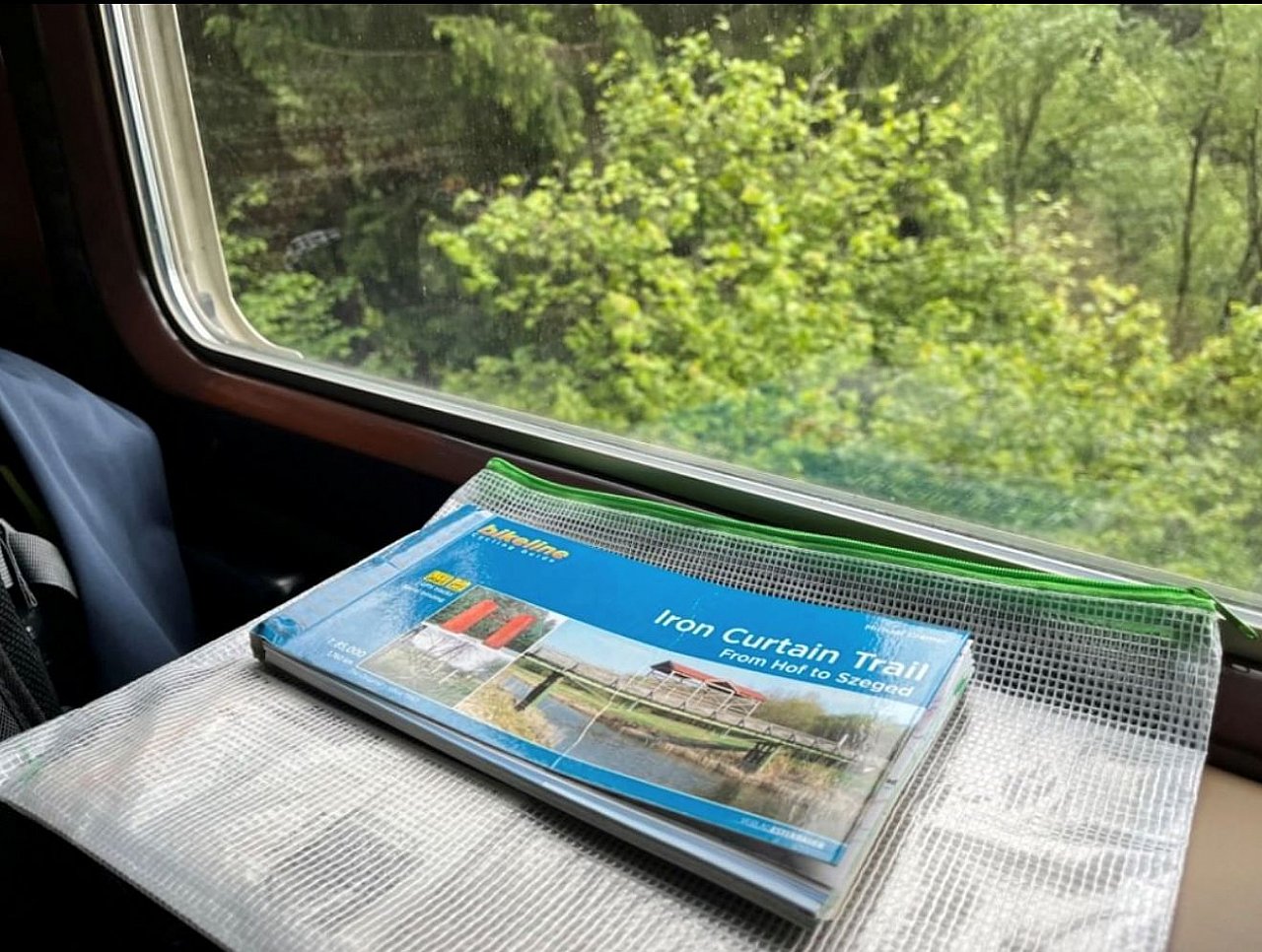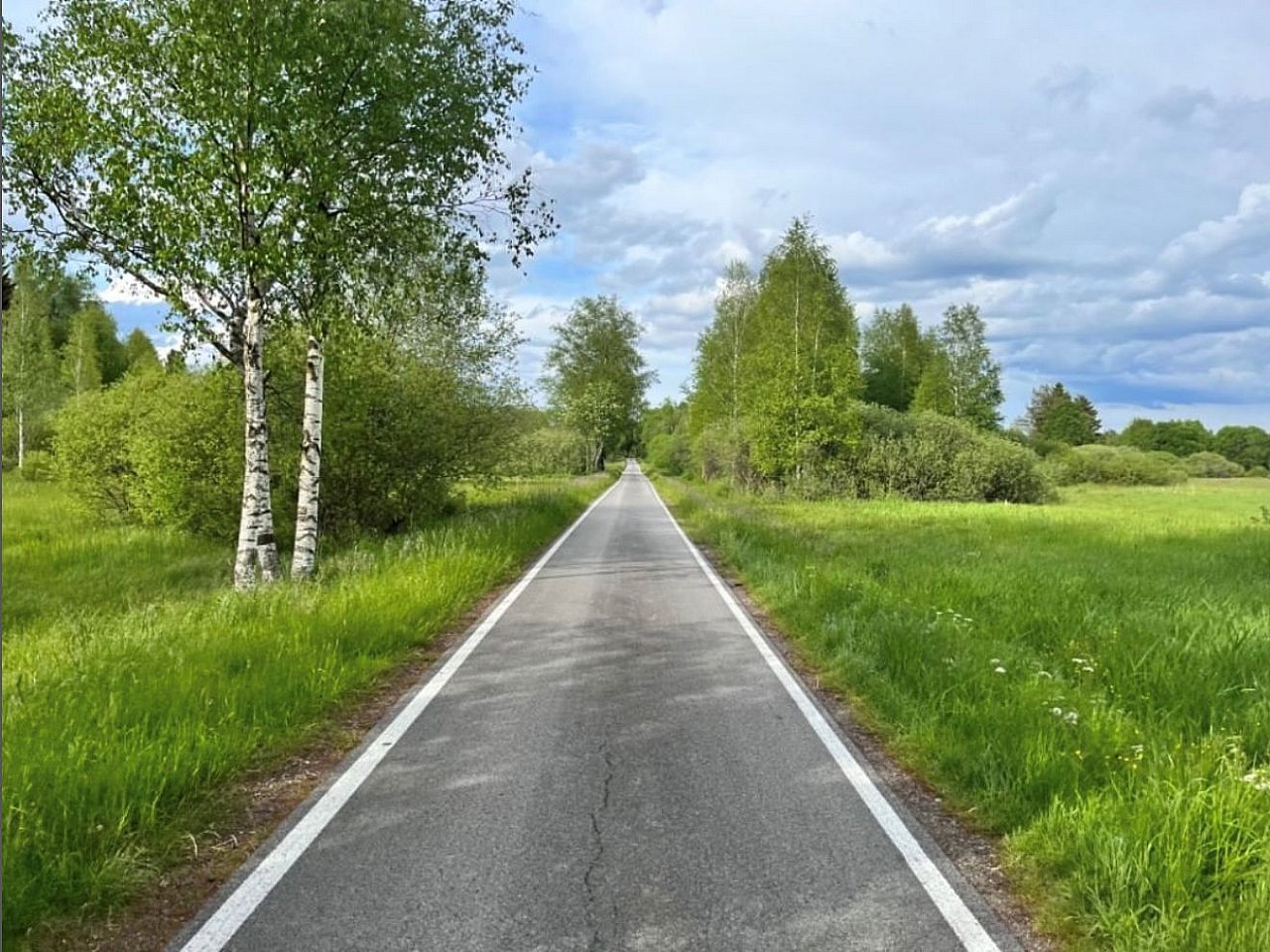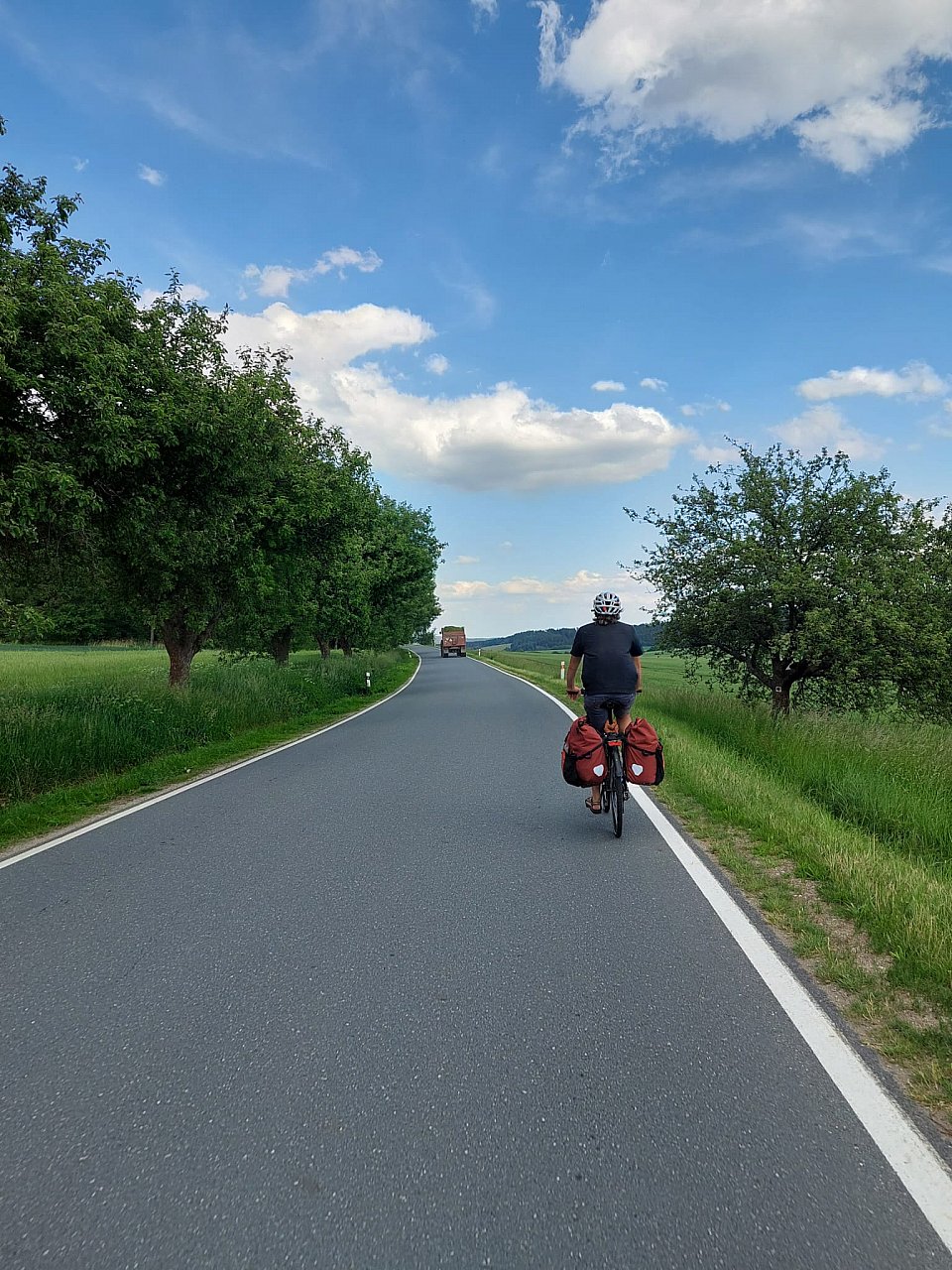SUPER NATURE
With Works by:
Ilona Németh, Grandstand 8, Greetings from Ringelsdorf-Niederabsdorf for Bruce Nauman, 2022, Installation
Christina Gruber, Shapeshifters, 2022
Interactive audio sculpture and intervention
Barbara Kapusta, Futures, 2022
Augmented-Reality-Installation
Katrin Hornek, Postindustrial Creatures, 2022/23
Conversation, edible bird sculptures (made of sugar); installation 2023
Further positions will be realised between Marchegg and Hohenau/March until 2023.

Tour d'ICT, (c)Tomáš Prištiak und Michael Plessl

Tour d'ICT, (c)Tomáš Prištiak und Michael Plessl

Tour d'ICT, (c) Jonathan Dellago, Celestina Minichová
SUPER NATUR PART 1: FLUTEN (FLOODS/FLOODING)
“These are the times of urgencies that need stories!” (Donna Haraway)
Cooperation and collaboration are key concepts for the survival of humanity. Communal practices, care, appealing to a sense of solidarity, the reconfiguration of historical ideas, the exploration of the complexity of borders and how they can be overcome, our relationship to nature and to the virtual world, and alternative forms of mobility, like cycling: All of these themes and subjects can be found in the project SUPER NATURE, curated by Alexandra Berlinger, Ursula Maria Probst, and Martin Wagner. The first part of these artistic interventions on the Iron Curtain Trail will kick off with the performance program FLUTEN (FLOODS/FLOODING) in Ringelsdorf-Niederabsdorf an der March.
On the occasion of the anniversary 100 Years of Lower Austria, permanent and temporary art installations will be realized for the first time along the bike path EuroVelo 13/Iron Curtain Trail between Hohenau and Marchegg in 2022–2023. These works will address nature and the ecological and economic history of this special area. The permanent projects will be supplemented by temporary interventions, augmented reality interactions, performances, activism, temporary artworks, workshops, and talks, all of which highlight multifaceted themes in the interaction between cycling, landscape, history, and art that is increasingly attractive for green policies.
The easternmost part of Lower Austria is defined by a unique natural landscape called the March wetlands. Local environmental initiatives have been fighting for this landscape for years, which also has a history as the border to the “East.” The so-called Iron Curtain, which primarily took the shape of a natural border in this region, not only dominated this area from 1955 to 1989; it also had a lasting impact on people’s lives and on the landscape. It was a painful experience for the inhabitants on either side and influenced the local flora and fauna.
Our perception of the world is defined by our experience of borders and overcoming them. This is exacerbated by such effects as the war in Ukraine currently raging in Europe. In order to intensify the idea of community and transcultural exchange along the border landscape between Austria and Slovakia, a bilateral bicycle performance by art students from Bratislava and Vienna took place in June 2022 under the name Tour d’ICT as a prologue to the project.
In art as in the research of borders and critical spatial practices of the distribution of resources, there is a long history of using the transformative power and production of alternative imaginations as a way to give lived reality, the perception of borders, and what is defined by them a new shape. For this reason, we are also interested in the question of how augmented reality and fictionality can be used for processes of movement in “border landscapes.”
In traumatic times such as ours, in which reality distorts itself, becoming aware that the so-called real is not authentic means reinterpreting this reality.
With local conditions in mind, we explore the term “intra-action,” which was coined by the physicist Karen Barad for mutually connected actors from the world of animals, humans, and plants, while also taking inspiration from the performingborders platform and Topological Atlas. In short, in contrast to Bruno Latour’s actor-network theory and Donna Haraway’s idea of “situated knowledge,” “intra-action” can be described as the mutually influencing quality of the intertwined agency of matter. In a conversation with artists and with those people who are affected, we will research the production of visual, acoustic, performative, and palpable counter-geographies of borders that also leave room for the experience of what has not been documented so far.
SUPER NATURE deals with the multifaceted complexity of borders, which ranges from geopolitical, economic, and ecological factors, to social practice, cultural production, and the natural environment along the border and beyond it—not to mention the aspects of “radical care” that go hand-in-hand with climate protection in a currently changing, global political context.
FLUTEN (FLOODS/FLOODING), which is the title of performance program of the first part of SUPER NATURE, acts as a metaphor for how fixed borders can be changed and overcome through art and collaborative cultural work.
“These are the times of urgencies that need stories!” (Donna Haraway)
Cooperation and collaboration are key concepts for the survival of humanity. Communal practices, care, appealing to a sense of solidarity, the reconfiguration of historical ideas, the exploration of the complexity of borders and how they can be overcome, our relationship to nature and to the virtual world, and alternative forms of mobility, like cycling: All of these themes and subjects can be found in the project SUPER NATURE, curated by Alexandra Berlinger, Ursula Maria Probst, and Martin Wagner. The first part of these artistic interventions on the Iron Curtain Trail will kick off with the performance program FLUTEN (FLOODS/FLOODING) in Ringelsdorf-Niederabsdorf an der March.
On the occasion of the anniversary 100 Years of Lower Austria, permanent and temporary art installations will be realized for the first time along the bike path EuroVelo 13/Iron Curtain Trail between Hohenau and Marchegg in 2022–2023. These works will address nature and the ecological and economic history of this special area. The permanent projects will be supplemented by temporary interventions, augmented reality interactions, performances, activism, temporary artworks, workshops, and talks, all of which highlight multifaceted themes in the interaction between cycling, landscape, history, and art that is increasingly attractive for green policies.
The easternmost part of Lower Austria is defined by a unique natural landscape called the March wetlands. Local environmental initiatives have been fighting for this landscape for years, which also has a history as the border to the “East.” The so-called Iron Curtain, which primarily took the shape of a natural border in this region, not only dominated this area from 1955 to 1989; it also had a lasting impact on people’s lives and on the landscape. It was a painful experience for the inhabitants on either side and influenced the local flora and fauna.
Our perception of the world is defined by our experience of borders and overcoming them. This is exacerbated by such effects as the war in Ukraine currently raging in Europe. In order to intensify the idea of community and transcultural exchange along the border landscape between Austria and Slovakia, a bilateral bicycle performance by art students from Bratislava and Vienna took place in June 2022 under the name Tour d’ICT as a prologue to the project.
In art as in the research of borders and critical spatial practices of the distribution of resources, there is a long history of using the transformative power and production of alternative imaginations as a way to give lived reality, the perception of borders, and what is defined by them a new shape. For this reason, we are also interested in the question of how augmented reality and fictionality can be used for processes of movement in “border landscapes.”
In traumatic times such as ours, in which reality distorts itself, becoming aware that the so-called real is not authentic means reinterpreting this reality.
With local conditions in mind, we explore the term “intra-action,” which was coined by the physicist Karen Barad for mutually connected actors from the world of animals, humans, and plants, while also taking inspiration from the performingborders platform and Topological Atlas. In short, in contrast to Bruno Latour’s actor-network theory and Donna Haraway’s idea of “situated knowledge,” “intra-action” can be described as the mutually influencing quality of the intertwined agency of matter. In a conversation with artists and with those people who are affected, we will research the production of visual, acoustic, performative, and palpable counter-geographies of borders that also leave room for the experience of what has not been documented so far.
SUPER NATURE deals with the multifaceted complexity of borders, which ranges from geopolitical, economic, and ecological factors, to social practice, cultural production, and the natural environment along the border and beyond it—not to mention the aspects of “radical care” that go hand-in-hand with climate protection in a currently changing, global political context.
FLUTEN (FLOODS/FLOODING), which is the title of performance program of the first part of SUPER NATURE, acts as a metaphor for how fixed borders can be changed and overcome through art and collaborative cultural work.

